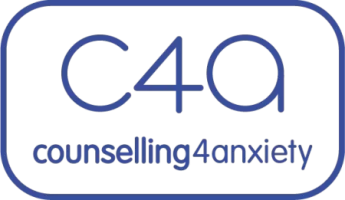Changing the Way We View Anxiety
Thank you for landing on the Counselling4Anxiety page and by doing so, I am guessing that you have been searching for information or even support on anxiety. At least I am assuming so.
I am a qualified therapist who specialises in anxiety disorders, though through a central belief that pathologising anxiety does not help anyone who suffers from it, nor does it help in shedding feelings of insecurity, low self-esteem and a lack of confidence that go with issues around anxiety.
So many health practitioners have fallen into the trap of getting clients to think about ‘defeating’, ‘pushing away’, ‘removing’ or ‘challenging anxiety’. Such language and terms sets up a view that clients are in a constant and confrontational battle with parts of themselves; these include those biological and psychological parts of themselves that are simply structured to keep them safe. Instead of getting clients to understand that anxiety disorders are a symptom of super-sensitised neural pathways that form part of the limbic system and which seek to keep them safe, many clients have been given the impression by health professionals, that anxiety is a perpetual risk and threat, thereby giving it much more value and strength than need be.
Let’s Start
So let’s start by saying that anxiety is a biological response to ensure our safety and which historically made sure that we were not attacked by an animal or predator as we roamed the earth. However, instead of working to keep us safe in such situations (which rarely exist today), work stresses, familial and economic problems as well as social media and a desire to gain the ‘perfect looks and bodies’, have all triggered the same anxiety pathways.
Repeated triggering of these anxiety causing pathways can develop social anxieties, phobias, ruminations and panic attacks in some people. These lead to feelings of impending ‘catastrophic’ fears, which are what many people with an anxiety condition carry with them and which then further trigger further feelings of ‘being out of control’ in their lives. Thereby self-serving and painful mental and emotional anxiety loops are created and sustained.

What You Will Get Through My Work?
I work with clients to change the way that they view anxiety and to look at how they can co-exist with healthy anxiety that can keep them safe, whilst remaining grounded in feeling that they are in control, if they suffer anxiety symptoms in the future.
My work with clients also involves working on cognitive distortions and cognitive fusions, thoughts that are central to fuelling anxiety and fears and which more than likely, have come from client experiences of trauma in their lives.
Furthermore, I work with clients to help them find out where phobias, panic attacks and ruminations (in conditions such as Obsessive Complusive Disorders), may have developed from. In other words, what social and personal experiences they endured that are more than likely to have made them vulnerable to these conditions.
Putting into practice such retrospective reflection work, also helps many people to develop a greater sense of self-compassion for themselves as they get to experience what they have been through and to realise how much their mind and body have done to try and protect and defend them against life’s turbulences.
Lastly, body work that can reduce the somatic sensations of anxiety, as well as tackling the cognitive distortions and fusions, (at a higher level), ensures that clients have a ‘bottom-up’ and ‘top-down’ approach in working through their anxiety - whether that be agoraphobia and social anxiety, OCD ruminations, catastrophic thinking, phobias or panic attacks.
What's next?
Thank you for landing on this page. If you have a few minutes more, why don’t you have a browse through the therapy and counselling services that I provide or feel free to get in touch.
Get in Touch
Feel free to contact me via the form below or on 0208 906 6877 if you have any questions about how therapy works, or to arrange an initial assessment appointment.
All enquires are usually answered within 24 hours, and all contact is strictly confidential and uses secure phone and email services.
© Counselling4Anxiety
Powered by WebHealer

